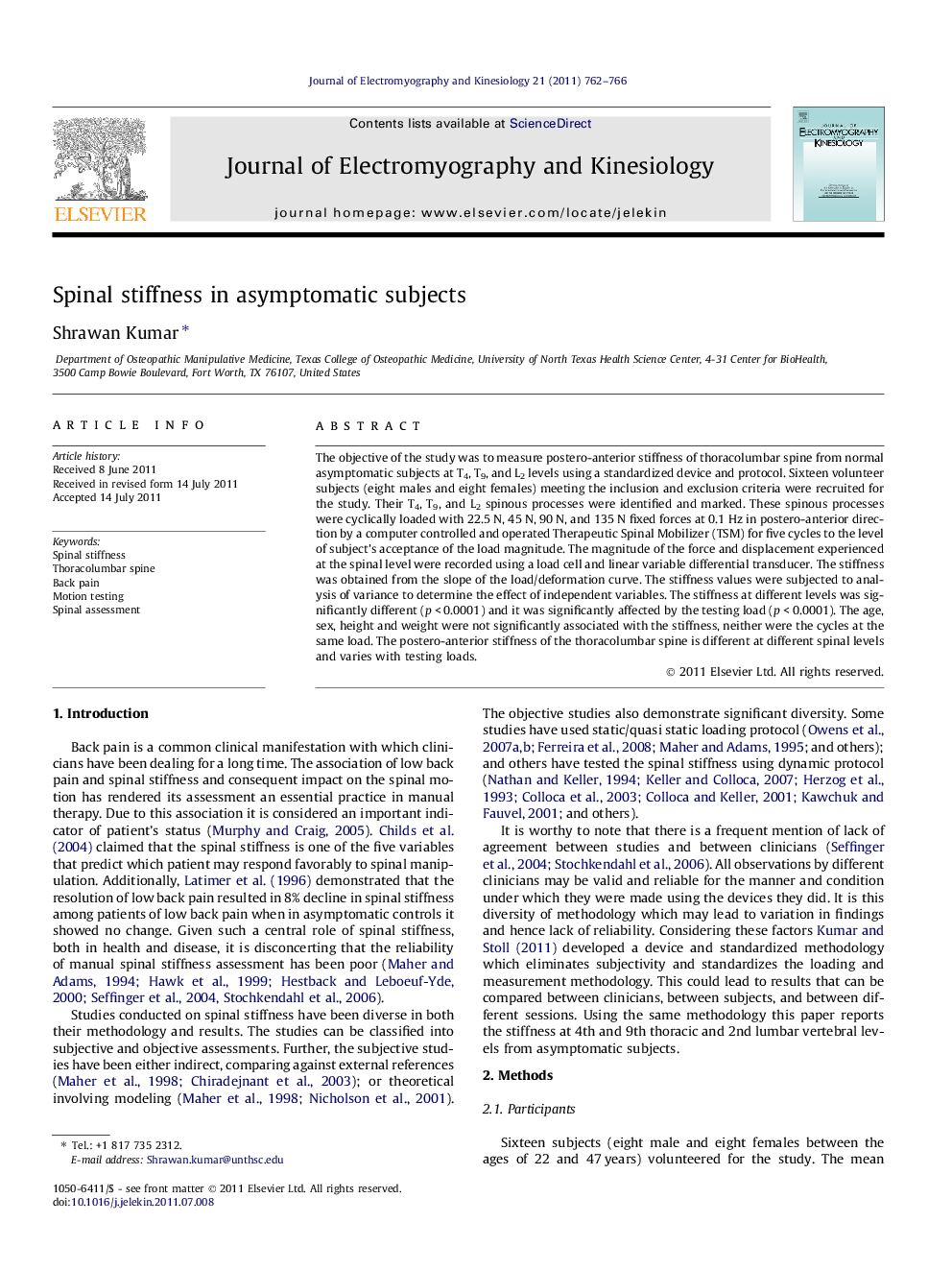| Article ID | Journal | Published Year | Pages | File Type |
|---|---|---|---|---|
| 4065070 | Journal of Electromyography and Kinesiology | 2011 | 5 Pages |
Abstract
The objective of the study was to measure postero-anterior stiffness of thoracolumbar spine from normal asymptomatic subjects at T4, T9, and L2 levels using a standardized device and protocol. Sixteen volunteer subjects (eight males and eight females) meeting the inclusion and exclusion criteria were recruited for the study. Their T4, T9, and L2 spinous processes were identified and marked. These spinous processes were cyclically loaded with 22.5 N, 45 N, 90 N, and 135 N fixed forces at 0.1 Hz in postero-anterior direction by a computer controlled and operated Therapeutic Spinal Mobilizer (TSM) for five cycles to the level of subject's acceptance of the load magnitude. The magnitude of the force and displacement experienced at the spinal level were recorded using a load cell and linear variable differential transducer. The stiffness was obtained from the slope of the load/deformation curve. The stiffness values were subjected to analysis of variance to determine the effect of independent variables. The stiffness at different levels was significantly different (p < 0.0001) and it was significantly affected by the testing load (p < 0.0001). The age, sex, height and weight were not significantly associated with the stiffness, neither were the cycles at the same load. The postero-anterior stiffness of the thoracolumbar spine is different at different spinal levels and varies with testing loads.
Related Topics
Health Sciences
Medicine and Dentistry
Orthopedics, Sports Medicine and Rehabilitation
Authors
Shrawan Kumar,
